Abstract
The effects of the relative durations of the conditional stimulus and the intertrial interval on bar pressing during a conditioned-suppression procedure were examined as a function of two additional variables--type of operant baseline schedule and rate of shock presentation. In Experiment 1, response suppression was compared across components of a multiple fixed-ratio, random-ratio, fixed-interval, random-interval schedule, at relative conditioned-stimulus/intertrial-interval durations of 1/1, 1/4, and 1/9. In Experiment 2, relative conditioned-stimulus/intertrial-interval duration (1/5, 3/3, or 5/1) was manipulated across groups, while shock frequency (2, 6, or 10 shocks/hr) was manipulated within groups. In both experiments, suppression during the signal was virtually complete at all relative durations. Responding was also suppressed during the intertrial interval, but that suppression varied as a function of experimental manipulations. In Experiment 1, intertrial-interval response rates were higher when relative signal duration was 1/9 than when it was 1/1, although both relative signal duration and shock frequency, which covaried, could have contributed to the difference. In Experiment 2, the patterning of response rates between successive shocks was affected by relative duration, absolute rates during the intertrial interval varied as a function of shock frequency, and differences between suppression during the signal and suppression during the intertrial interval were affected by both relative duration and shock frequency. The data support an analysis based upon relationships between shock-correlated and intertrial-interval stimuli and, as assessed by the relative-delay-to-reinforcement metric, are comparable to results that have been reported from experiments using similar manipulations under the autoshaping paradigm.
Full text
PDF
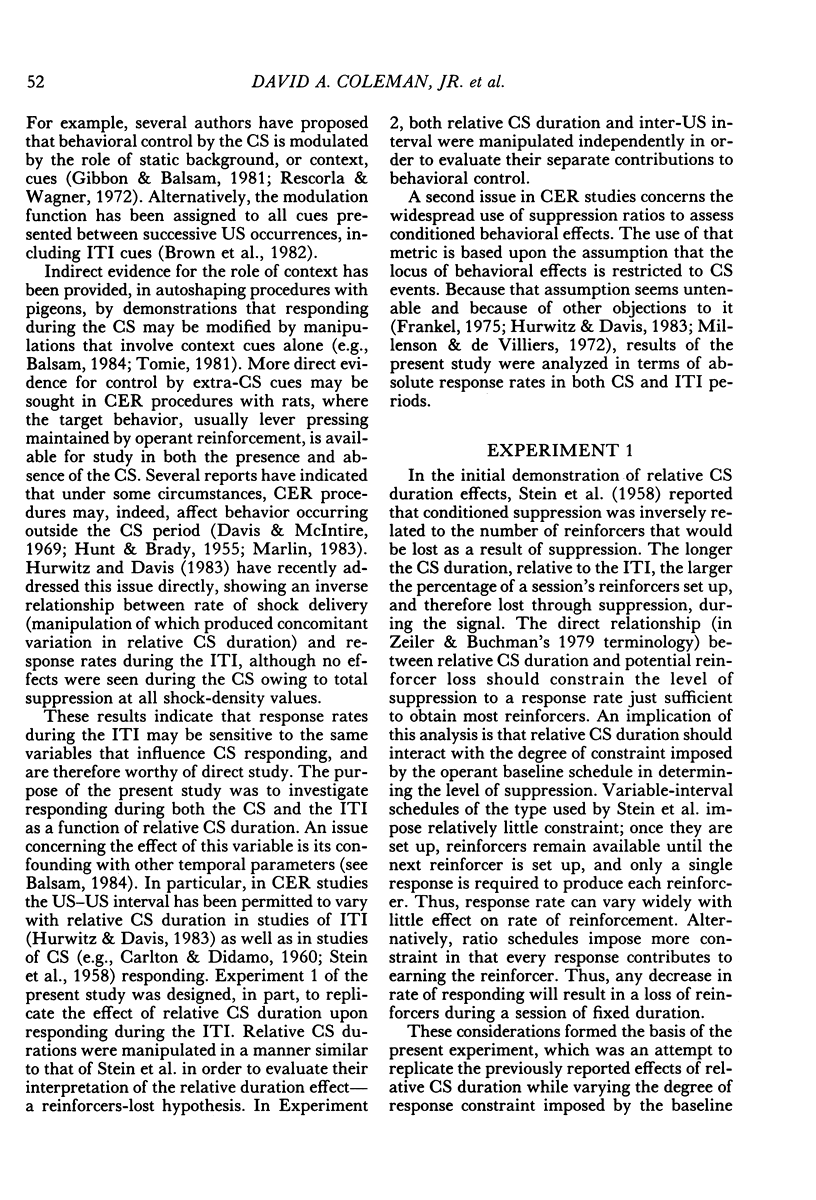
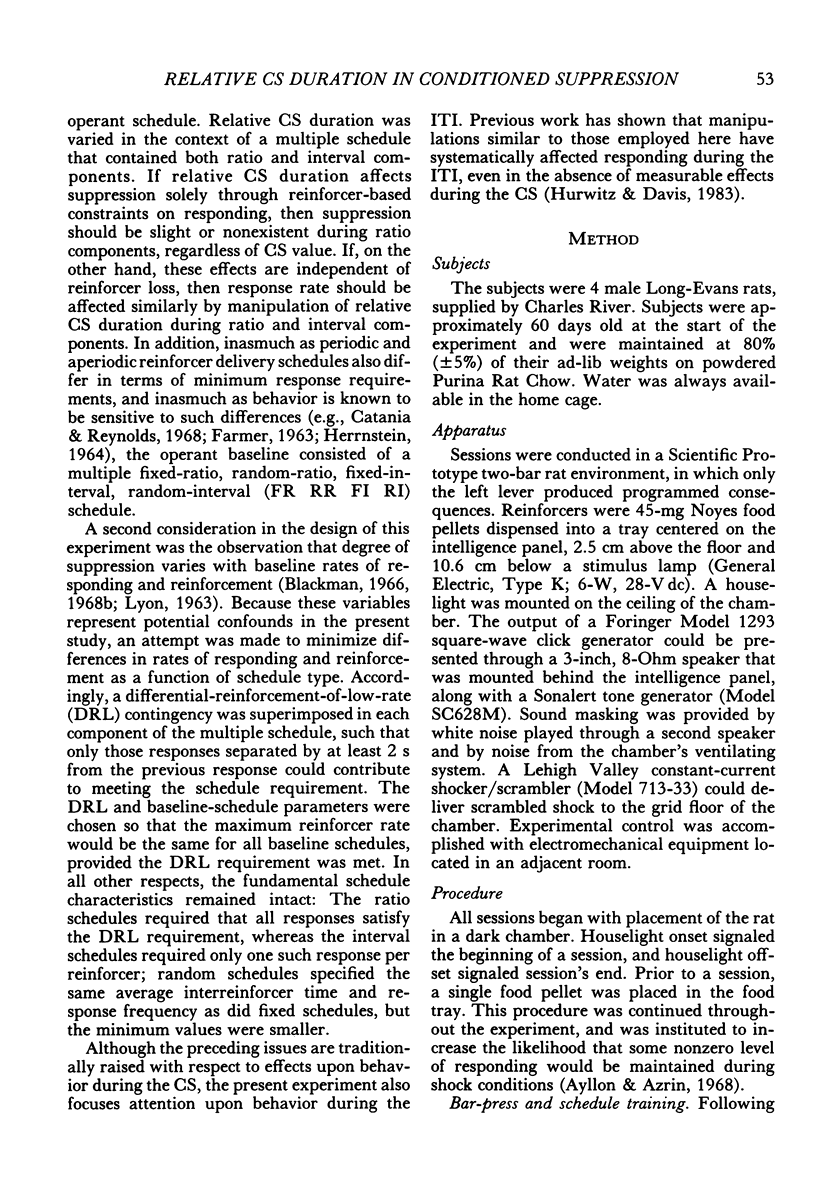
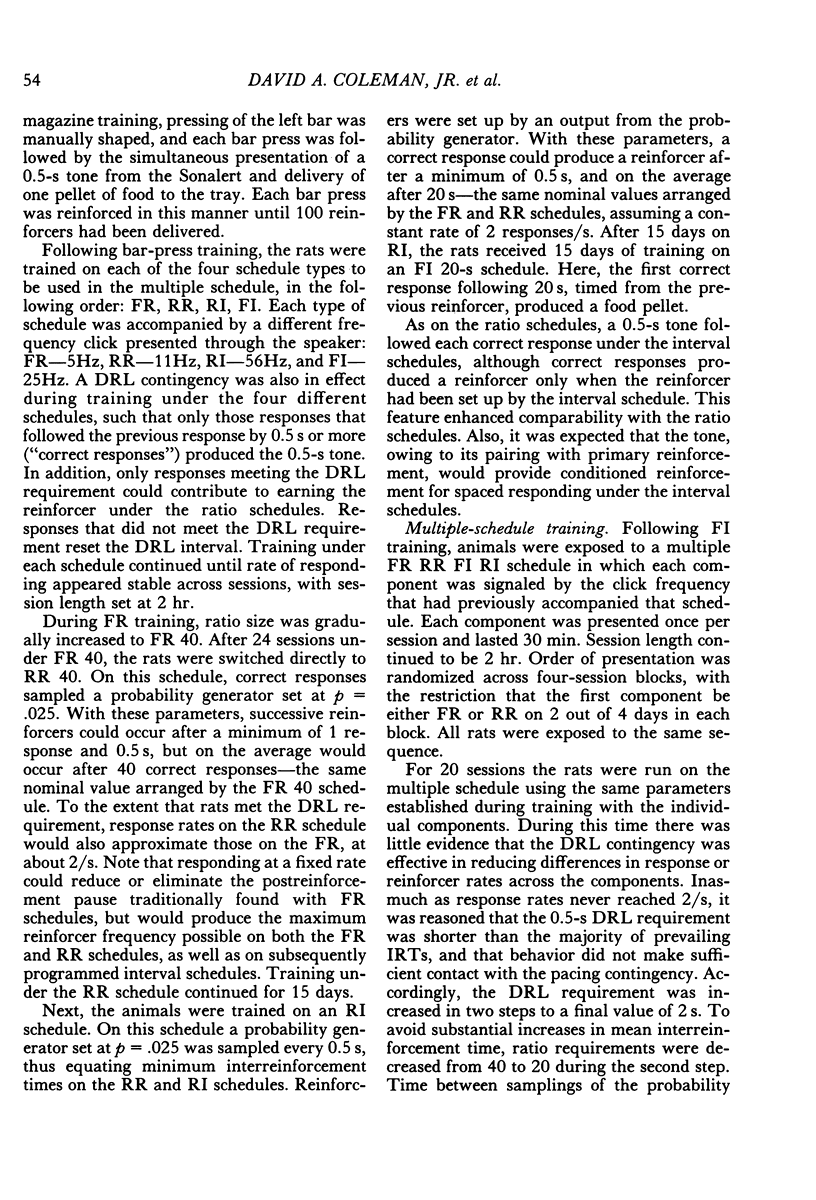
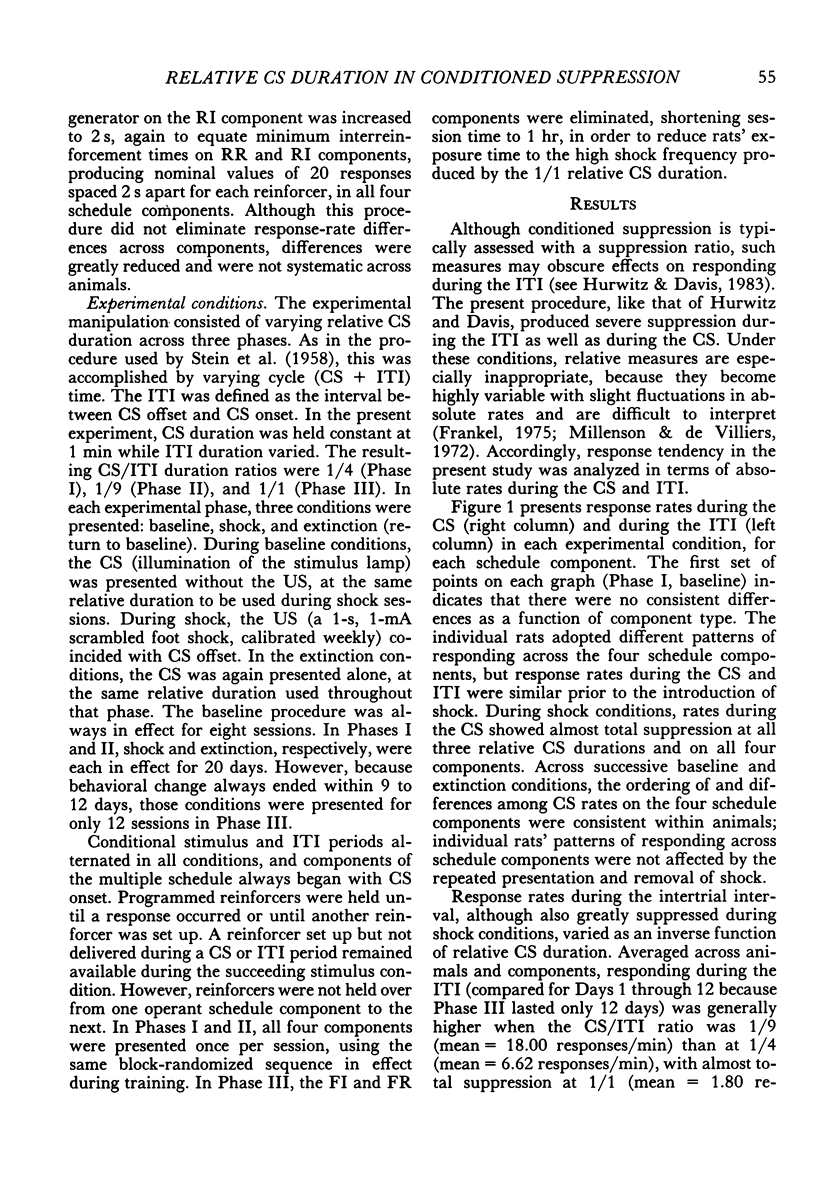

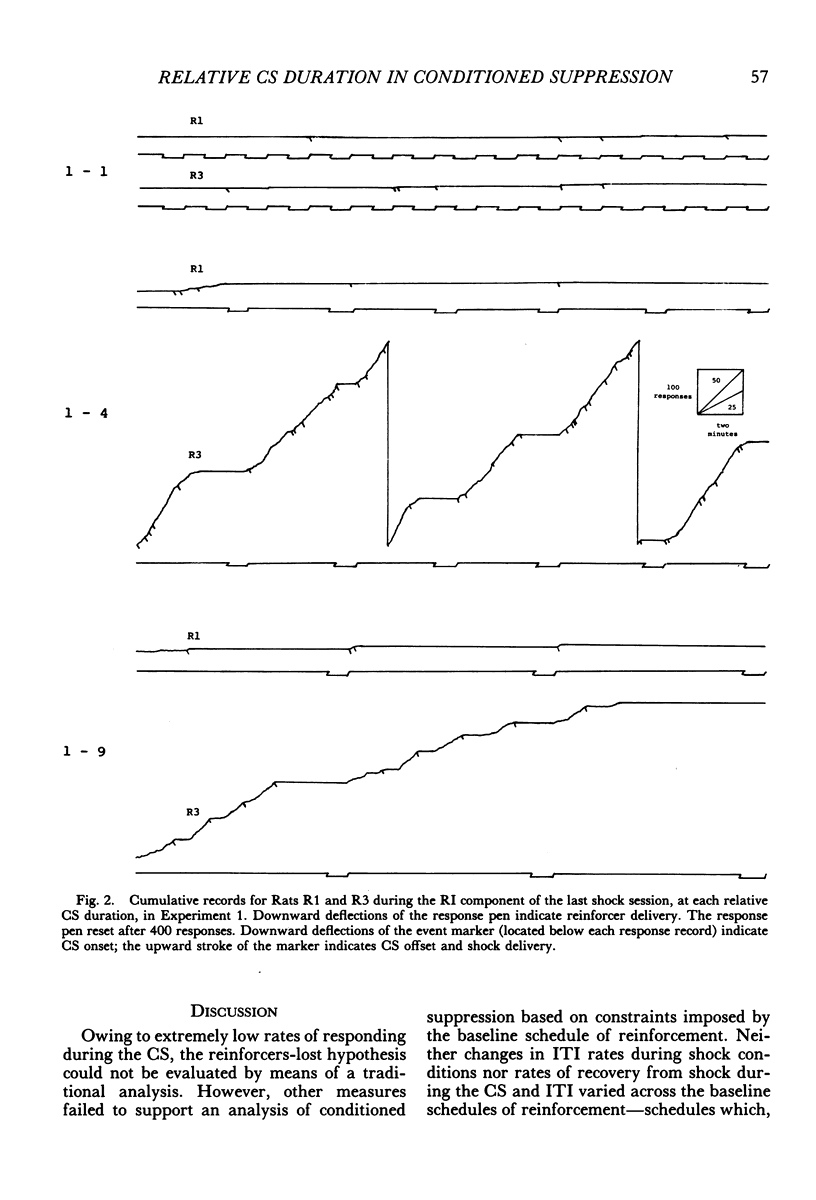
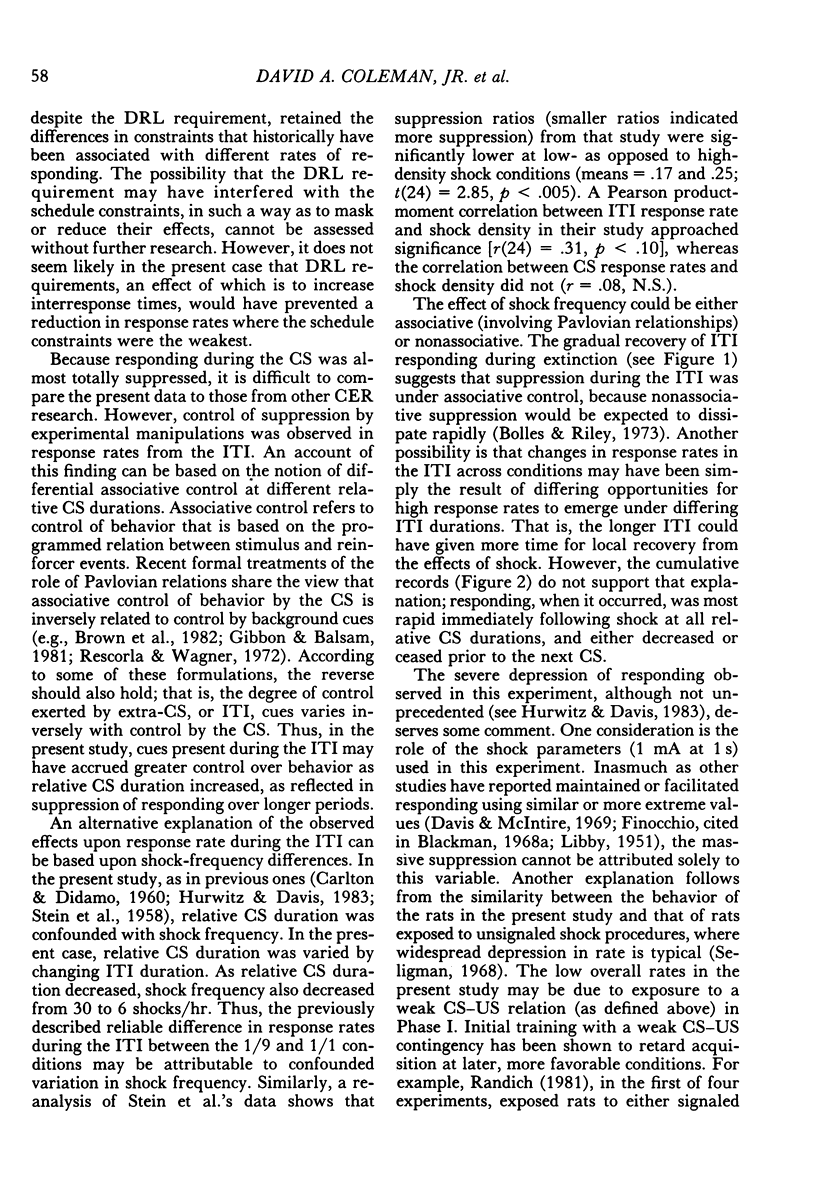


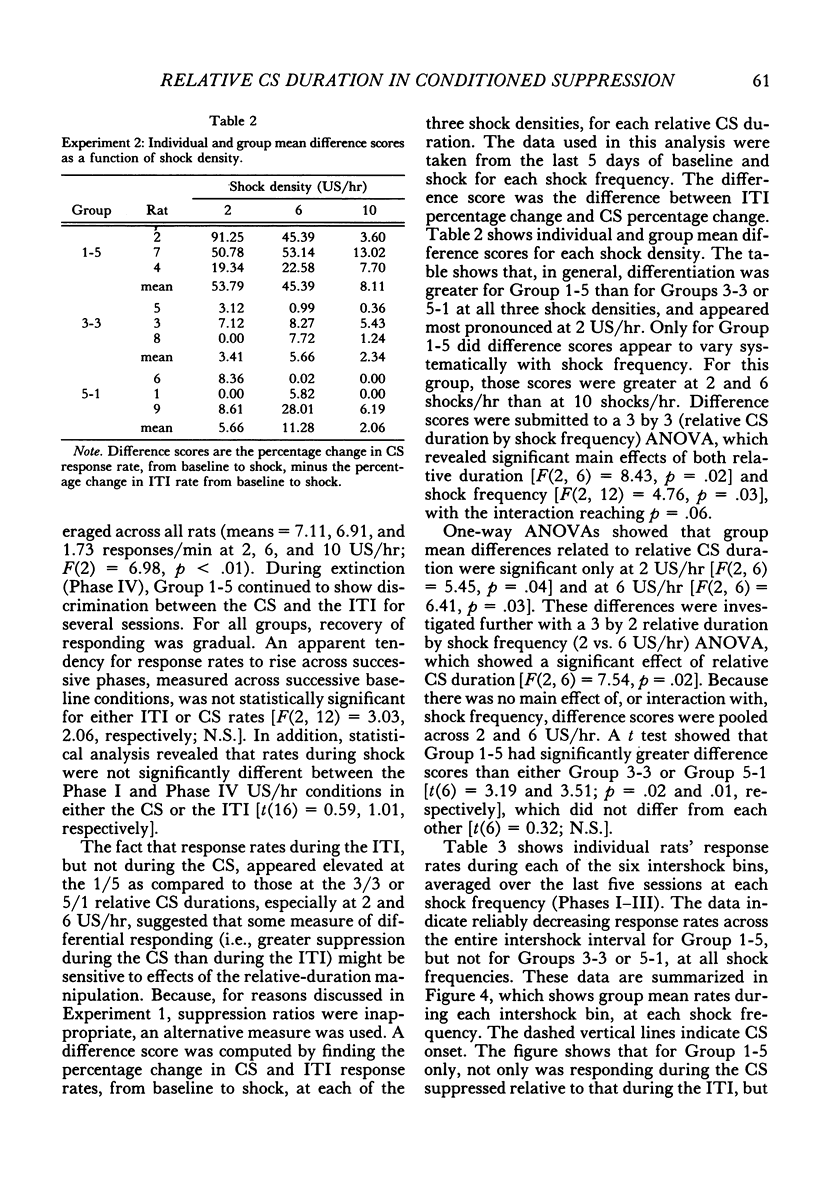
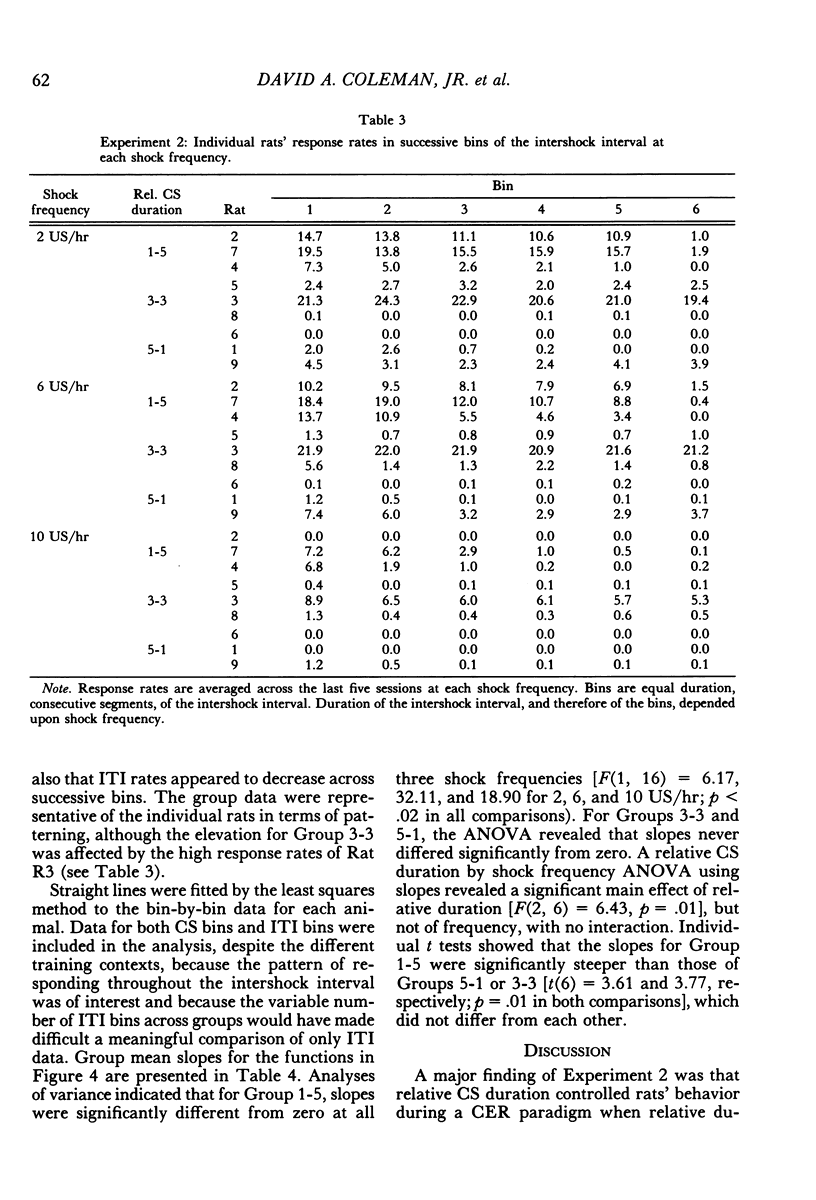

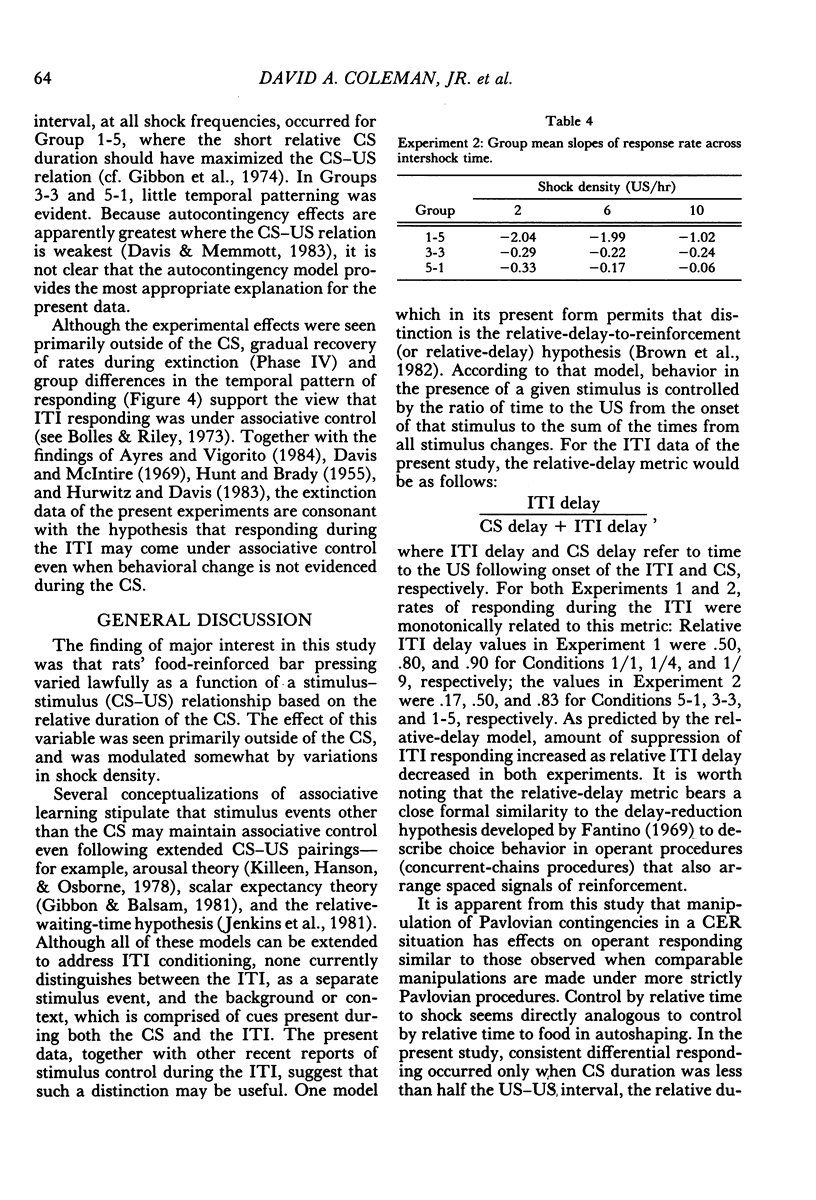

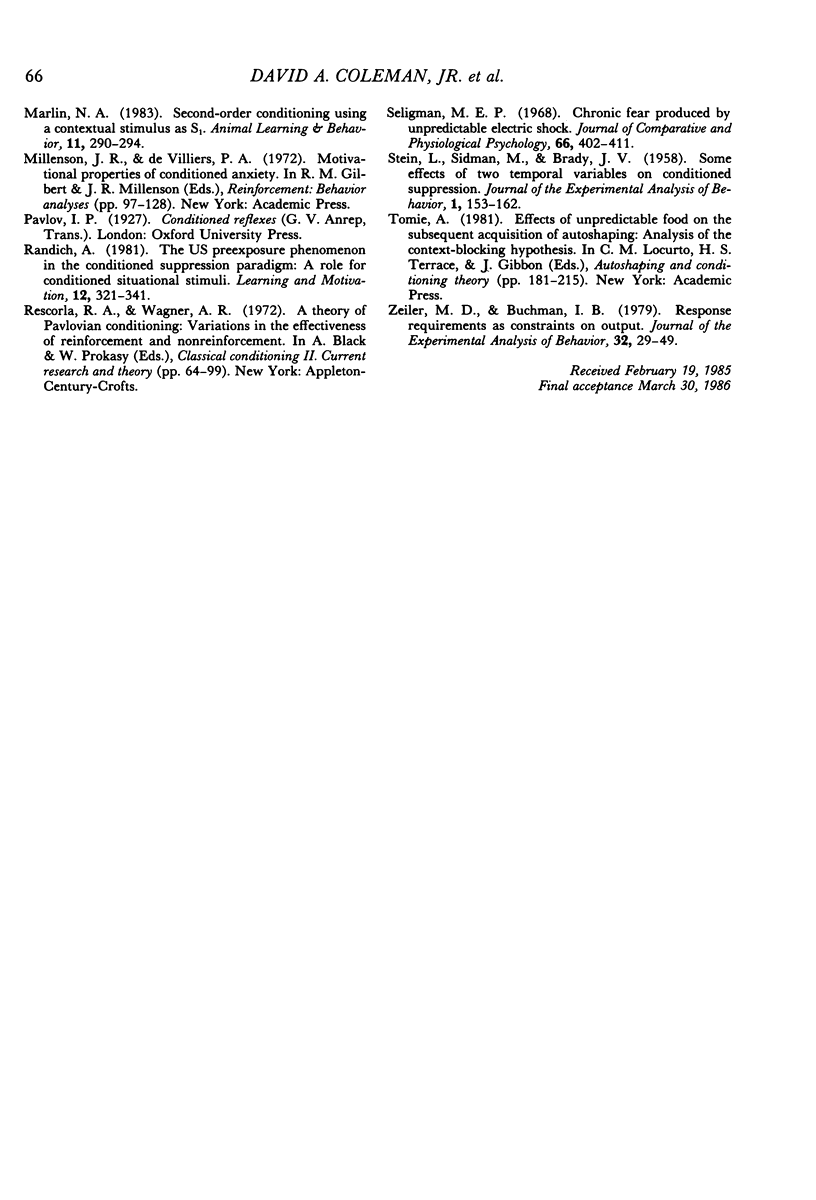
Selected References
These references are in PubMed. This may not be the complete list of references from this article.
- Ayllon T., Azrin N. H. Reinforcer sampling: a technique for increasing the behavior of mental patients. J Appl Behav Anal. 1968 Spring;1(1):13–20. doi: 10.1901/jaba.1968.1-13. [DOI] [PMC free article] [PubMed] [Google Scholar]
- Blackman D. Conditioned suppression or facilitation as a function of the behavioral baseline. J Exp Anal Behav. 1968 Jan;11(1):53–61. doi: 10.1901/jeab.1968.11-53. [DOI] [PMC free article] [PubMed] [Google Scholar]
- Blackman D. Response rate and conditioned suppression. Psychol Rep. 1966 Dec;19(3):687–693. doi: 10.2466/pr0.1966.19.3.687. [DOI] [PubMed] [Google Scholar]
- CARLTON P. L., DIDAMO P. Some notes on the control of conditioned suppression. J Exp Anal Behav. 1960 Jul;3:255–258. doi: 10.1901/jeab.1960.3-255. [DOI] [PMC free article] [PubMed] [Google Scholar]
- Catania A. C., Reynolds G. S. A quantitative analysis of the responding maintained by interval schedules of reinforcement. J Exp Anal Behav. 1968 May;11(3 Suppl):327–383. doi: 10.1901/jeab.1968.11-s327. [DOI] [PMC free article] [PubMed] [Google Scholar]
- Davis H., McIntire R. W. Conditioned suppression under positive, negative, and no contingency between conditioned and unconditioned stimuli. J Exp Anal Behav. 1969 Jul;12(4):633–640. doi: 10.1901/jeab.1969.12-633. [DOI] [PMC free article] [PubMed] [Google Scholar]
- FARMER J. PROPERTIES OF BEHAVIOR UNDER RANDOM INTERVAL REINFORCEMENT SCHEDULES. J Exp Anal Behav. 1963 Oct;6:607–616. doi: 10.1901/jeab.1963.6-607. [DOI] [PMC free article] [PubMed] [Google Scholar]
- Gibbon J., Berryman R., Thompson R. L. Contingency spaces and measures in classical and instrumental conditioning. J Exp Anal Behav. 1974 May;21(3):585–605. doi: 10.1901/jeab.1974.21-585. [DOI] [PMC free article] [PubMed] [Google Scholar]
- HERRNSTEIN R. J. SECONDARY REINFORCEMENT AND RATE OF PRIMARY REINFORCEMENT. J Exp Anal Behav. 1964 Jan;7:27–36. doi: 10.1901/jeab.1964.7-27. [DOI] [PMC free article] [PubMed] [Google Scholar]
- HUNT H. F., BRADY J. V. Some effects of punishment and intercurrent anxiety on a simple operant. J Comp Physiol Psychol. 1955 Aug;48(4):305–310. doi: 10.1037/h0042529. [DOI] [PubMed] [Google Scholar]
- Killeen P. R., Hanson S. J., Osborne S. R. Arousal: its genesis and manifestation as response rate. Psychol Rev. 1978 Nov;85(6):571–581. [PubMed] [Google Scholar]
- LIBBY A. Two variables in the acquisition of depressant properties by a stimulus. J Exp Psychol. 1951 Aug;42(2):100–107. doi: 10.1037/h0062433. [DOI] [PubMed] [Google Scholar]
- LYON D. O. Frequency of reinforcement as a parameter of conditioned suppression. J Exp Anal Behav. 1963 Jan;6:95–98. doi: 10.1901/jeab.1963.6-95. [DOI] [PMC free article] [PubMed] [Google Scholar]
- Seligman M. E. Chronic fear produced by unpredictable electric shock. J Comp Physiol Psychol. 1968 Oct;66(2):402–411. doi: 10.1037/h0026355. [DOI] [PubMed] [Google Scholar]
- Stein L., Sidman M., Brady J. V. Some effects of Two Temporal Variables on Conditioned Suppression. J Exp Anal Behav. 1958 Apr;1(2):153–162. doi: 10.1901/jeab.1958.1-153. [DOI] [PMC free article] [PubMed] [Google Scholar]
- Zeiler M. D., Buchman I. B. Response requirements as constraints on output. J Exp Anal Behav. 1979 Jul;32(1):29–49. doi: 10.1901/jeab.1979.32-29. [DOI] [PMC free article] [PubMed] [Google Scholar]


